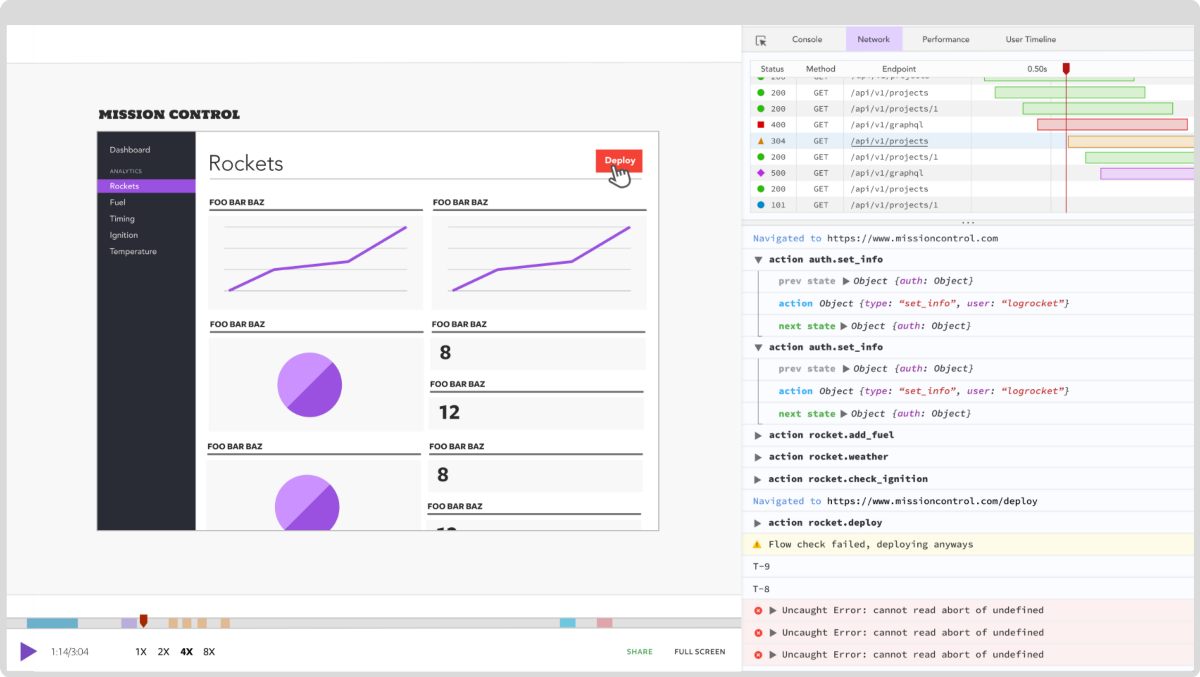
Next.js 15.4 is here, and it’s more than just a typical update. This version marks a major milestone for the framework and its growing ecosystem. While each release usually offers useful improvements, this one feels different. It shows real momentum, especially for developers who have been following the evolution of Turbopack closely.

Turbopack has been talked about for a while as the future of frontend bundling, but up until now, it hasn’t quite felt “ready” for serious production use. That changes with 15.4. This new release introduces significant improvements and sets the stage for what’s next, with the arrival of Next.js 16 later this summer.
So, if you’ve been holding off on upgrading, waiting to see if Turbopack is finally stable enough, or simply curious about what’s new under the hood, you are in the right place. In this article, we’ll break down what’s new in 15.4, explore some hidden gems, and take a quick look at what’s ahead in the Next.js roadmap.
The Replay is a weekly newsletter for dev and engineering leaders.
Delivered once a week, it's your curated guide to the most important conversations around frontend dev, emerging AI tools, and the state of modern software.
One of the standout highlights in the Next.js 15.4 release is that the next build --turbopack successfully passes all 8,302 integration tests for production builds. That’s thousands of edge cases, regressions, and real-world scenarios that are now confidently handled by Turbopack.
It’s a major milestone in the framework’s evolution, bringing this new bundler one step closer to becoming the default. The significance of this milestone becomes even clearer when you consider that Vercel is now using Turbopack to power its high-traffic site. This is a strong signal that Turbopack is no longer experimental; it’s reliable.
While 15.4 doesn’t introduce flashy new features for Turbopack, it does bring significant improvements under the hood. A wide range of performance tweaks and stability fixes have made the build process smoother and more reliable. If you tried Turbopack a few months ago and ran into trouble, now’s a great time to give it another shot.
The team’s main focus moving forward is on two priorities: completing bundling optimizations through production chunking and fixing bugs reported by early adopters of the Alpha release. The goal is to officially transition Turbopack into beta with the release of Next.js 16, a milestone that’s now within reach thanks to the groundwork laid in 15.4.
In short, Turbopack has improved considerably. It’s now fast, stable, and on track to become a viable replacement for Webpack in production environments.
Next.js 15.4 isn’t just about Turbopack; it’s packed with practical improvements that solve real problems developers face every day. Let’s break down the changes that are likely to impact your workflow:
Several practical features have been introduced to enhance both the development workflow and production behavior:
onInvalidate callback for router.prefetch() . When cached data becomes stale, this Hook triggers automatic re-fetching, useful for custom navigation components requiring real-time synchronization without relying on Next.js’s built-in <Link>prefetch semantic alias — Introduces prefetch="auto" as syntactic sugar for prefetch={undefined}, improving code readability while maintaining the default adaptive prefetch behaviorglobal-not-found pages — Enables full metadata export capabilities in global-not-found.js, allowing customized SEO tags and structured data for 404 pages--debug-prerender — Introduces the --debug-prerender flag to next build, providing detailed diagnostics and full error stacks to help troubleshoot issues with partial pre-rendering (PPR) and static generation, strictly for development use, not productionhtmlrewriter in server externals — Enables use of the htmlrewriter package within server runtimes for HTML transformationsThis release also resolves several important bugs and issues.
staleTime propagates to seeded prefetch entries and fixed stale prefetch retention for static pagesVary header reinstatement — Restores proper handling of the Vary response header for better caching behaviorlaunchEditor — Improves developer experience by gracefully handling unexpected file path formats when using the editor launch utilitybodySizeLimit errors with non-multipart actions and ensured proper 404 responses for invalid action IDs, thereby improving server action reliabilityThis release also includes improvements to existing features.
unstable_rootParams in client components — Enforces boundaries between server and client components by disallowing the use of unstable root parameters in client contextsassert/strict as an external dependency and upgraded @vercel/og to 0.7.2 for improved image generationsearchParam data in FlightRouterState before transport — Reduces payload size and avoids unnecessary rerenders in streamed routingWhile the major features capture most of the attention, Next.js 15.4 includes some smaller improvements that may go unnoticed but offer significant value to developers working on specific use cases:
This adds the ability to restart the dev server directly from the error overlay and indicator preferences, improving iteration speed during debugging. While seemingly small, this enhancement can drastically speed up debugging cycles, especially during local development with hot module replacement issues.
The team has made significant efforts in improving static path generation performance and parameter handling. They have also optimized the React Compiler integration by checking files with SWC (Speedy Web Compiler) first, which should result in faster compilation times across the board.
Additionally, the improved CPU profiling support during development (NEXT_CPU_PROF usage fixes) might not seem exciting, but for teams dealing with performance bottlenecks, being able to capture accurate CPU traces during development is invaluable. This is the kind of tooling that separates professional-grade frameworks from hobby projects.
The decision to upgrade to Next.js 15.4 largely depends on your current setup and specific needs.
If you are currently using an older version of Next.js and have not been closely following the Turbopack development, 15.4 represents an excellent opportunity to experience the performance improvements firsthand. The combination of faster build times and improved development server performance can significantly impact your daily development workflow, especially for larger applications.
However, as with any framework upgrade, it’s wise to test thoroughly in a development environment first. While Next.js maintains excellent backward compatibility, the extensive changes in 15.4 warrant careful testing, particularly if you are using advanced features or have a complex application architecture.
For new projects, starting with 15.4 gives you access to the latest improvements and sets you up for a smooth transition to Next.js 16 when it arrives.
Upgrading to Next.js 15.4 is straightforward, with the team providing multiple paths depending on your preferences and project setup.
The recommended approach is to use the automated upgrade CLI, which handles dependency updates and can identify potential compatibility issues:
npx @next/codemod@canary upgrade latest
This tool not only updates your dependencies but also runs codemods that can automatically fix common compatibility issues, saving you time and reducing the risk of manual errors.
If you prefer manual control over the upgrade process, you can update the dependencies directly:
npm install next@latest react@latest react-dom@latest
For new projects, you can start with Next.js 15.4 from the beginning:
npx create-next-app@latest
Before upgrading production apps, test the update in a development or staging environment. Focus on build times, runtime performance, and any custom configurations that the changes may impact.
While Next.js 15.4 is impressive on its own, it’s also serving as a preview for the exciting developments coming in Next.js 16, scheduled for release this summer. The roadmap reveals a clear focus on developer experience and performance optimization:
cacheComponents will unify caching features like use cache, Dynamic IO, and PPR. This makes it easier to optimize performance without juggling scattered experimental APIsnext build --turbopack to beta status. Given that it’s already passing all integration tests and running production workloads, this beta status should give teams the confidence they need to adopt Turbopack in production environmentsloading.tsx. Experimental forwarding of browser logs to your terminal is also in the works, paving the way for AI-powered debugging workflows$next/image$ APIs with appropriate migration guidanceFor developers eager to get hands-on experience with Next.js 16 features before the official release, many of these improvements are already available through the canary channel. You can start experimenting today by enabling specific experimental flags in your next.config.js:
import type { NextConfig } from 'next';
const nextConfig: NextConfig = {
experimental: {
// Forward browser logs to the terminal for easier debugging
browserDebugInfoInTerminal: true,
// Enable new caching and pre-rendering behavior
dynamicIO: true, // will be renamed to cacheComponents in Next.js 16
// Activate new client-side router improvements
clientSegmentCache: true,
// Explore route composition and segment overrides via DevTools
devtoolSegmentExplorer: true,
// Enable support for `global-not-found`
globalNotFound: true,
// Enable persistent caching for the turbopack dev server and build.
turbopackPersistentCaching: true,
},
};
export default nextConfig;
Next.js 15.4 is more than just a minor update; it’s a sign of maturity for the Next.js ecosystem. Achieving 100% integration test compatibility for Turbopack builds, along with numerous improvements and bug fixes, shows that Next.js continues to grow in response to real developer needs.
Whether you’re upgrading an existing app or starting a new project, 15.4 provides immediate benefits and prepares you for what’s coming in Next.js 16. As always, test thoroughly before deploying to production, but if you’ve been waiting for a reason to upgrade, this release might be it.
I hope this article was helpful! If you have any questions or feedback, feel free to reach out to me on X. Happy coding!
Debugging Next applications can be difficult, especially when users experience issues that are difficult to reproduce. If you’re interested in monitoring and tracking state, automatically surfacing JavaScript errors, and tracking slow network requests and component load time, try LogRocket.
LogRocket captures console logs, errors, network requests, and pixel-perfect DOM recordings from user sessions and lets you replay them as users saw it, eliminating guesswork around why bugs happen — compatible with all frameworks.
LogRocket's Galileo AI watches sessions for you, instantly identifying and explaining user struggles with automated monitoring of your entire product experience.
The LogRocket Redux middleware package adds an extra layer of visibility into your user sessions. LogRocket logs all actions and state from your Redux stores.


Modernize how you debug your Next.js apps — start monitoring for free.

What storylines defined 2025 in frontend development? We power rank them all, from AI advancements to supply chain attacks and framework breakthroughs.

Learn how to style React Native apps with Tailwind using NativeWind v4.

A practical guide to the best React Native UI libraries in 2026, with comparisons across performance, theming, accessibility, and Expo compatibility.

children correctly in TypeScriptLearn modern best practices for typing React children in TypeScript, including ReactNode, PropsWithChildren, ComponentProps, and why React.FC is no longer recommended.
Would you be interested in joining LogRocket's developer community?
Join LogRocket’s Content Advisory Board. You’ll help inform the type of content we create and get access to exclusive meetups, social accreditation, and swag.
Sign up now